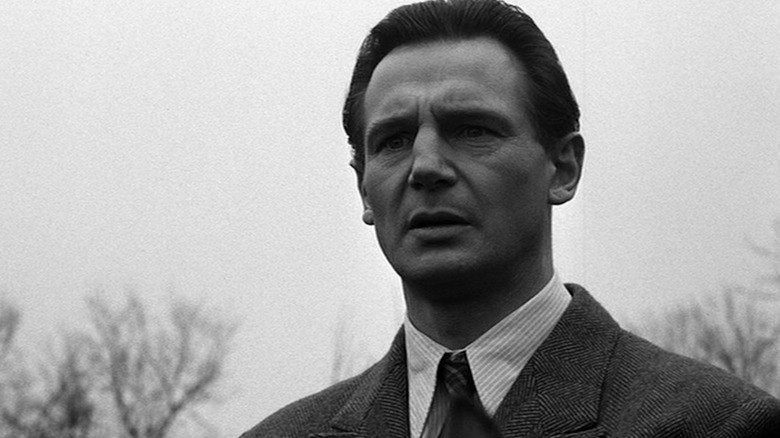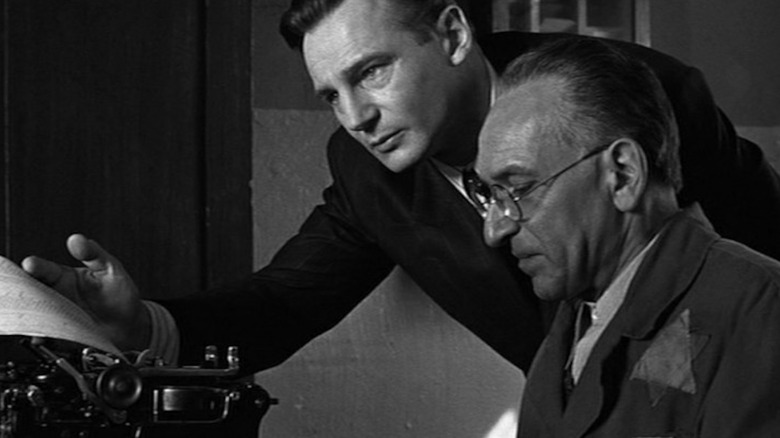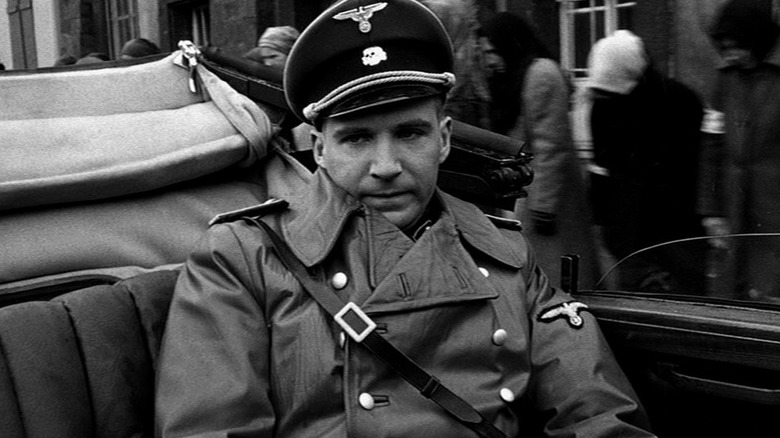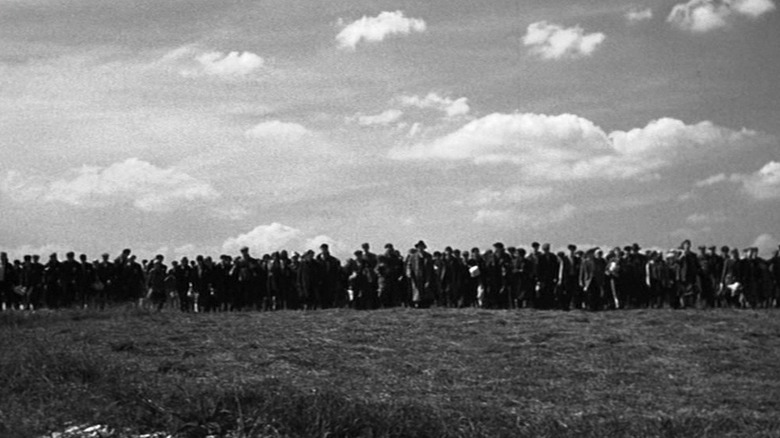Steven Spielberg Had No 'Safety Net' While Shooting Schindler's List
Steven Spielberg's "Schindler's List" is one of the most significant films in Hollywood history, but it was also a personal turning point in the renowned filmmaker's career. After making a name for himself with genre blockbusters such as "Jaws" or "E.T. the Extra-Terrestrial," Spielberg wanted to prove himself to his critics and peers by transitioning into a more personal and serious phase of his career. In 1982, former president of Universal, Sid Sheinberg, gave Spielberg a copy of the historical novel "Schindler's Ark," and told the director that this was the film he was destined to make, persistently asking him to adapt it. Spielberg would hold onto the novel for 10 years until it was "the right time" to visit this story. In 1991, Spielberg married Kate Capshaw in a traditional Jewish wedding, giving him a renewed faith in Judaism and pride in his own Jewish identity. After this reinvigorating experience, he knew he finally was ready to step up and approach the historically potent material.
"Schindler's List" began principal photography in 1993, and upon location scouting and tangibly visiting real-life towns in Poland, Spielberg knew this film would have to be tonally distinct from the rest of his work up until that point. He made it a personal goal to throw out everything he knew about filmmaking out the window and approached "Schindler's List" as if it were his first film, the guard rails of his previous directorial sensibilities completely off.
Filming Schindler's List on location changed everything for Spielberg
2017's HBO documentary, "Spielberg" shed some light on the storyteller's mindset:
"I realized at that point when I went to Poland for the first time, I had been playing with fire... I knew this couldn't be just another movie, and it couldn't be like anything I've ever directed before. I had to approach the material and I had to approach the location with a great deal of reverence. I had to make this a very quiet production. We were shooting on hallowed, sacred ground. Everywhere we shot in Kraków felt like we were shooting in a cemetery. It changed my entire approach to cinema."
In Daniel Eagan's "America's Film Legacy," Spielberg's loyal cinematographer Janusz Kaminski dug a little bit deeper into the look of the film. He and Spielberg did not want to make it look like a documentary, but a sense of timelessness and authenticity over Hollywood polish was one of the philosophies during production. "We want people to see this film in fifteen years and not have a sense of when it was made," Kaminski said. In a further attempt to throw out connections to Spielberg's previous works, Kaminski added that Spielberg "got rid of the crane, got rid of the Steadicam, got rid of the zoom lenses, got rid of everything that for me might be considered a safety net."
Spielberg aimed for a timeless and immersive tone
Most of "Schindler's List" would specifically be shot on handheld cameras to convey a sense of physicality to the audience and effectively made viewers feel like they were existing with the characters in the film, witnessing the horrors of the Holocaust firsthand. That desire for immersion is also what informed the black-and-white photography of the film. For AFI Movie Club, Kaminski emphasized the genuine risk it was for studios to accept Spielberg's decision to shoot the film in black-and-white, as it would have given the impression that "Schindler's List" would be something more art-house and alienate mainstream audiences. However, black-and-white allowed for Spielberg and Kaminski to make careful, deliberate choices about the lighting of the film, especially in adding dimension to Liam Neeson's performance as Oskar Schindler, and the various sides of morality he would portray. As Schindler's heart shifts throughout the film, the shadows on his face would soften with him.
Spielberg described shooting "Schindler's List" as the most difficult film he made in his career on an emotional level. With the deep responsibility, he felt over the heavy subject material, and his personal challenge to reinvent his own filmmaking philosophy, it's not difficult to see why. But, as Kaminski rightfully puts it, "We express ourselves artistically through our work, and you want to take chances." Spielberg's risks resulted in a film that harnesses his cinematic experiences and uses them to warn viewers about passivity in the face of true evil. It was a mainstream director's mirror into a desperate moment in time, giving the cultural climate an honest depiction of what terror and destruction truly feel like.
Spielberg's emotional intuitiveness shines through
Knowing he couldn't rightfully profit off of the film, Spielberg founded the USC Shoah Foundation to raise awareness and echo the voices of those who experienced the Holocaust and other genocides firsthand. "Schindler's List" would go on to win seven Academy Awards, including Spielberg's very first "Best Director" Oscar, fully honoring him and his body of work amongst his peers. Spielberg's risks paid off in the most important moment in his career.
There is, however, one distinct characteristic that Spielberg kept with him during the creation of "Schindler's List," and it continues to make him stand apart even without his trademark gadgets and fancy camera tricks. In HBO's "Spielberg," Ralph Fiennes describes his essence perfectly: "I wouldn't say he's an intellectual director. I think he feels and thinks intuitively, and emotionally."
Spielberg's emotional maturity prevails, even in his darkest films, because he knows how to direct that energy to his audience. When "The Fabelmans" comes around later this year, it will be interesting to see Spielberg's sentimentality thrive in an autobiographical narrative. His self-awareness was only strengthened by his back-to-basics experience on "Schindler's List."



